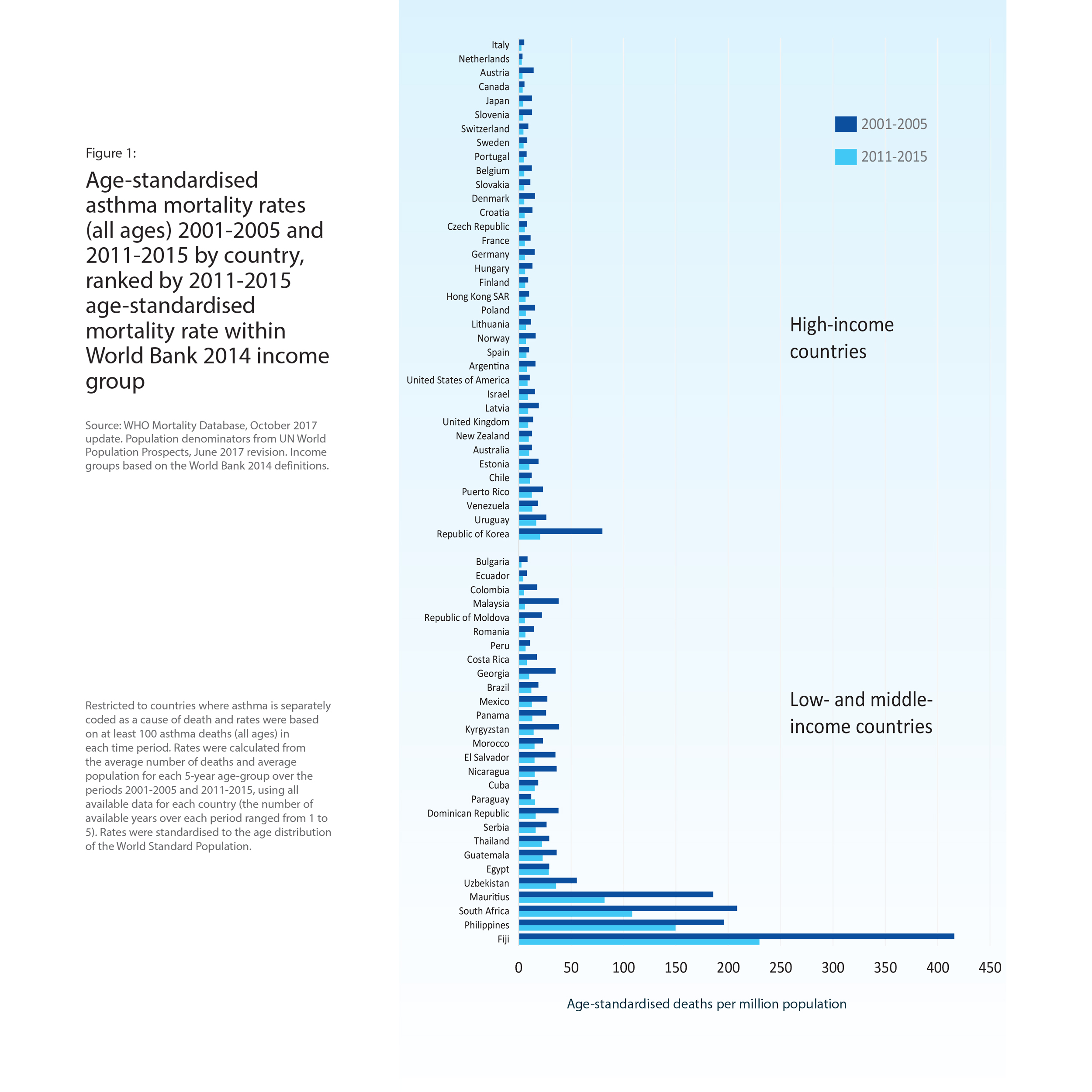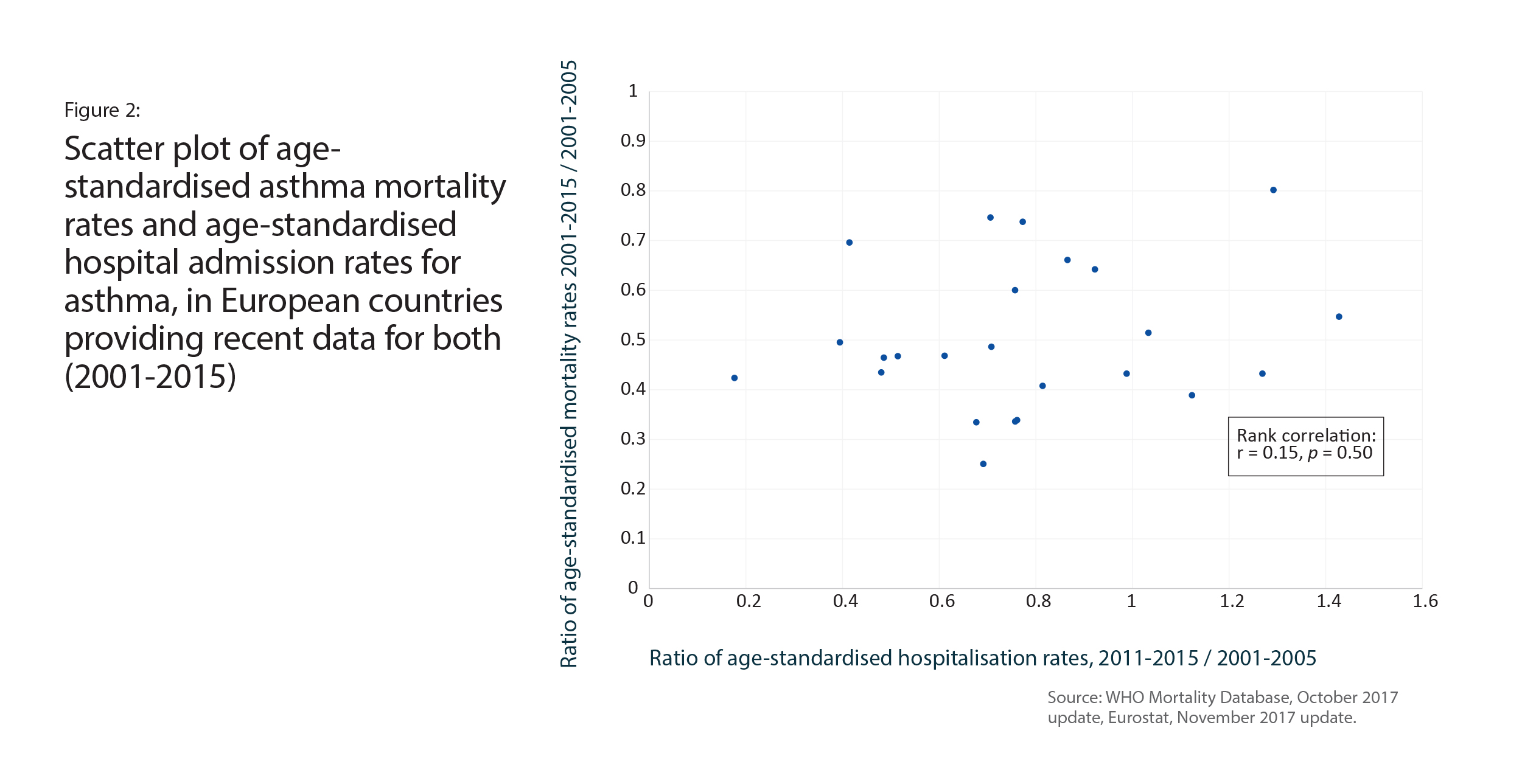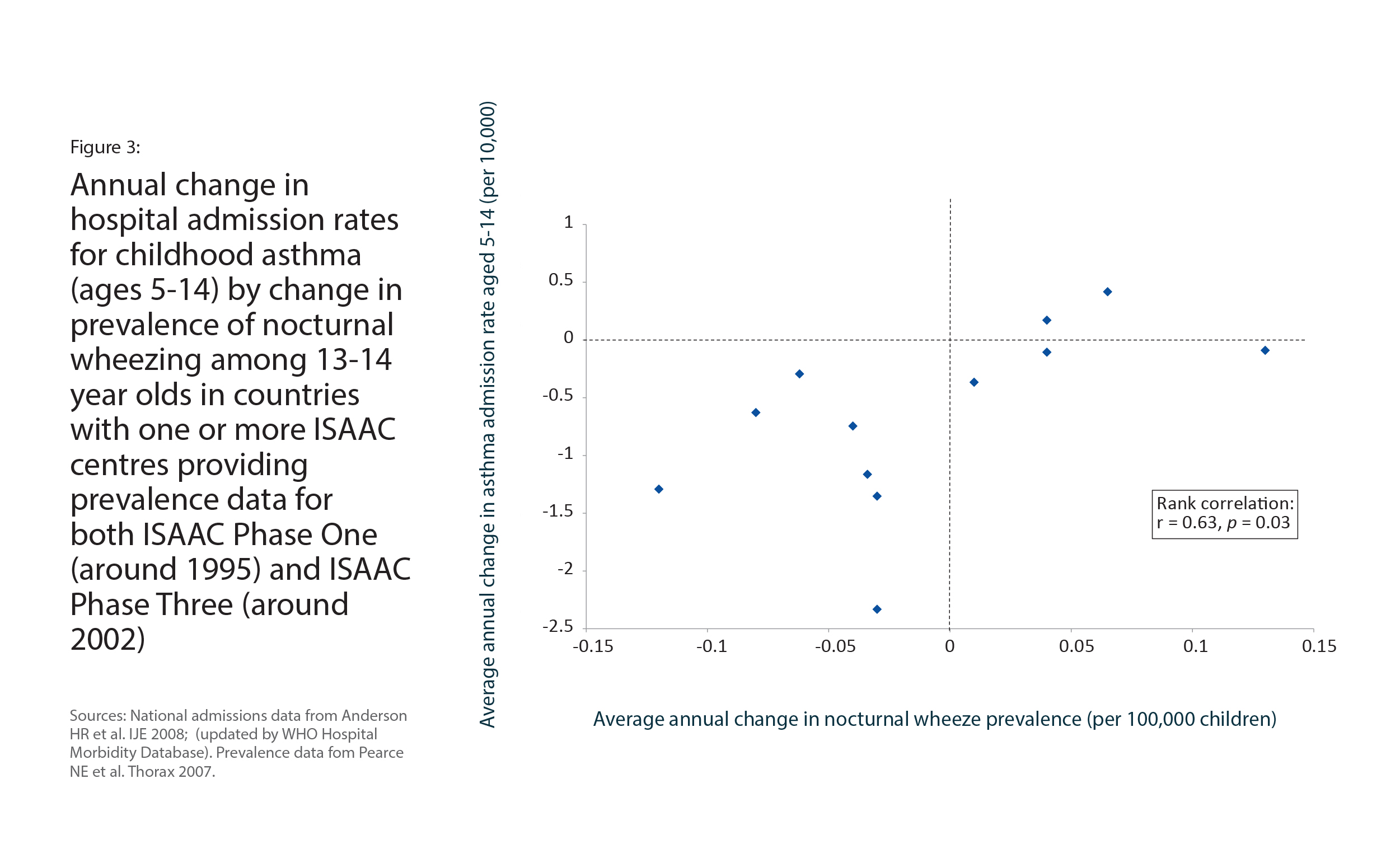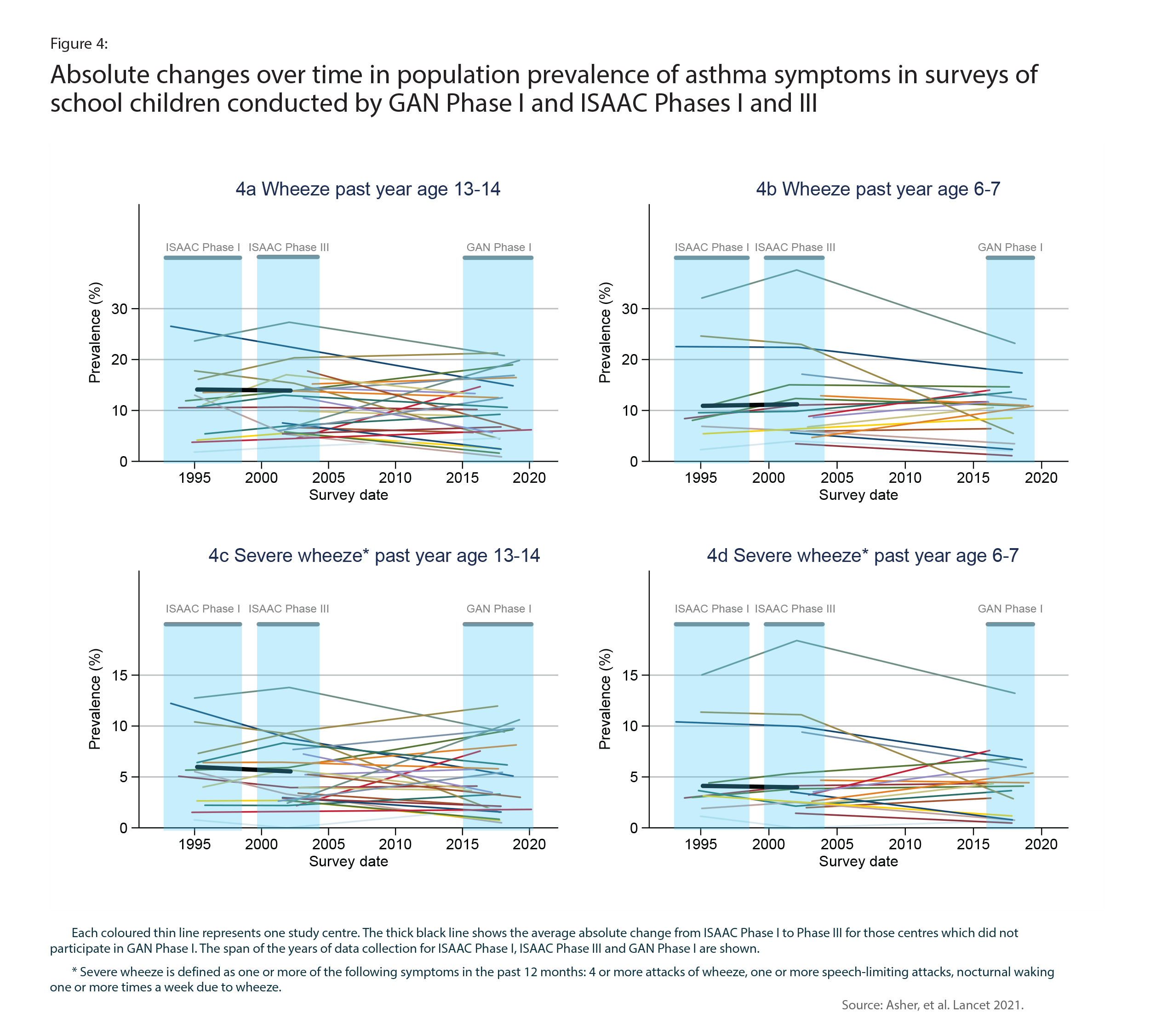
Asthma Deaths
Deaths due to asthma are of serious concern because there is evidence that many of them are preventable. Although most deaths certified as caused by asthma occur in older adults, comparisons of mortality rates have tended to focus upon children and younger adults, among whom alternative diagnoses are less common. Over the past 50 years, mortality rates in younger age-groups have fluctuated markedly in several higher-income countries, due to changes in medical care for asthma. Nowadays, age-adjusted asthma mortality rates are generally higher in lower-income countries, where effective asthma management may be either non-existent or inaccessible.
International comparisons
Asthma is a rare cause of mortality, contributing less than 1% of all deaths in most countries worldwide. Rates of death from asthma rise almost exponentially from mid-childhood to old age, so the majority of asthma deaths occur after middle age. However, there is considerable potential for diagnostic confusion with other forms of chronic respiratory disease in the older age groups, such as chronic obstructive pulmonary disease (COPD), so comparisons of mortality rates tend to focus upon children and younger adults.
The Global Burden of Disease (GBD) collaboration estimated that In 2019, 461,000 people in the world died from asthma – more than 1000 per day. This headline count has changed little since 2006, because while the average age of the population increased, age-standardised asthma death rates declined over this period.
Figure 1 compares the age-standardised mortality rates for asthma among countries reporting at least 100 asthma deaths in each of two 5-year periods (2001-2005 and 2011-2015). There is 100-fold variation in age-adjusted rates, for instance between Netherlands (low) and South Africa (high). When the comparisons are limited to 5-34 year olds, the large disparities persist although numbers of deaths are fewer and margins of error are larger (Global Asthma Report 2018 Chapter 3).
Trends over time
Figure 1 shows that age-standardised death rates from asthma fell substantially (by about one-half) in most countries from 2001-2005 to 2011-2015. This decline also affected the age group 5-34 years. Over the past half-century, there have been two epidemics in asthma mortality for this age-group in multiple higher-income countries.
The first, during the mid-to-late 1960s, represented an approximately 50% increase in asthma death rates among 5-34 year olds, and is generally attributed to the introduction of high-dose isoprenaline inhalers, which can have toxic effects on the heart during acute asthma attacks. When these medicines were withdrawn, the 1960s epidemic of asthma deaths subsided. The second epidemic, during the mid-1980s, represented an increase of approximately 38% in asthma death rates among 5-34 year olds. In at least some of the affected countries, it was probably due to the widespread use of inhaled fenoterol, another asthma medicine with potential cardiac toxicity. However, this second epidemic was also observed in some countries, such as the United States of America, where fenoterol was never approved or widely used.
Relationship between mortality time trends and trends for other measures of the burden of asthma
Taking a 50-year perspective, the epidemics of asthma mortality bear little relationship to the time trends for asthma prevalence or hospital admission rates for asthma. In several higher-income countries, asthma admission rates among children rose to a peak in the 1990s, after the 1980s peak in asthma mortality. Both hospital admission rates and asthma mortality rates have been declining since 2000, as shown in Figure 2 which compares changes in age-standardised rates of mortality and hospital admissions for asthma in 24 European countries reporting both measures during 2001-2005 and 2011-2015. Death rates declined more (in relative terms) than did admission rates, but there was very little correlation between these national trends. In contrast, changes in hospital admission rates over time do seem to correlate with changes in the population prevalence of severe asthma (as estimated by nocturnal wheeze prevalence), at least among children (Figure 3). Comparisons of population survey results from ISAAC and GAN in the same study centres using the same methodology show a slight decline in prevalence of asthma symptoms, both milder and more severe, among children over recent decades (Figures 4a-4d).
Avoidable factors in asthma deaths
Although asthma mortality rates have declined in many countries, avoidable factors still play a part in the majority of asthma deaths.
A comprehensive review of 195 asthma deaths in the United Kingdom during 2012-2013, found that nearly half died without seeking medical assistance or before emergency medical care could be provided. Additionally, the majority were not under specialist medical supervision during the year prior to death. Only one-quarter had been provided with a personal asthma action plan, acknowledged to improve asthma care, and there was evidence of excessive prescribing of short-acting reliever medicine, under-prescribing of preventer medicine, and inappropriate prescribing of long-acting β2-agonist (LABA)bronchodilator inhalers as the sole form of treatment.
These observations, from a high-income country with a tradition of evidence-based medicine and a national health service which is free at the point of use, suggests that improved access to appropriate asthma medicines and emergency care is a key goal in reducing asthma mortality worldwide.
Conclusion
Asthma deaths represent the “tip of the iceberg” of the global burden of asthma. Although the risk of any individual person with asthma dying of their disease is thankfully very low, many of these deaths are avoidable, being due to inappropriate management of asthma, including over-reliance on reliever medicines rather than preventer medicines. Although age-adjusted rates of asthma mortality have generally halved over a recent decade, they remain much higher in lower-income countries, where effective asthma management may be either non-existent or inaccessible.





